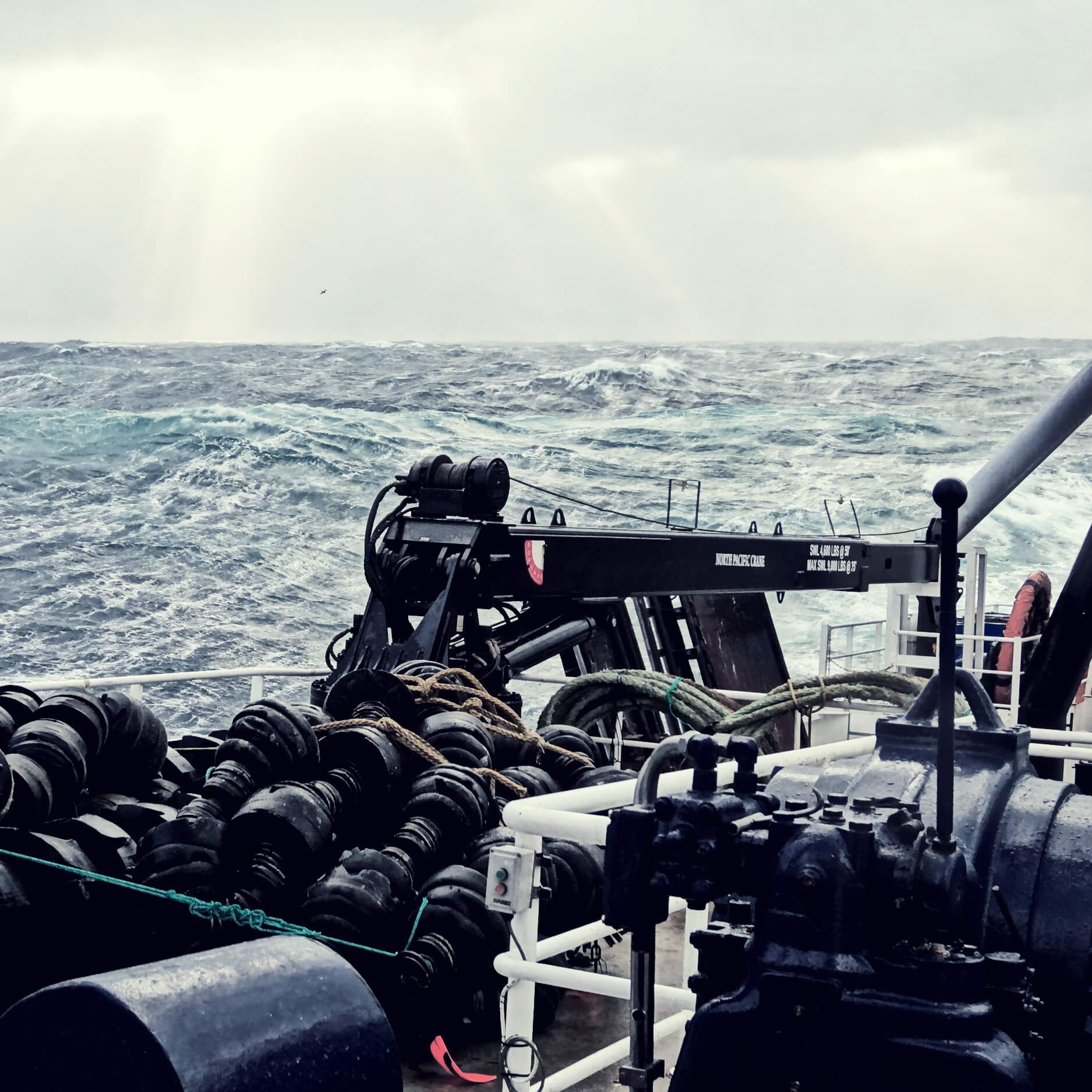Instruments to keep fishing in the Bering Sea sustainable

Up #north #fishing for Yellowfin Sole #BeringSea #Alaska #northern #fishingboat #boat #sea #trawler #iceberg #clouds #maritime #sealife #sky
- There are certain zones or depths throughout the Bering Sea where it is prohibited to use certain fishing instruments / methods. Fishing with the use of a towing net will not cause much damage on sandy sea floor, but it could cause great harm to the ecosystem in an area where corals or a big quantity of prohibited species is found. Also, sometimes there is a need to let fish population of certain species regrow itself in certain zones.
- There’s a GPS locator on every ship, with which the authorities monitor whether the ship is in a permitted zone.
- The amount of fish that can be caught is evaluated every year and it is based on the data acquired from observers, scientists, and fishing companies.
- No more fishing for those who try to cheat. Fishing boats with legal permit are constantly monitored by the authorities. Bering Sea fishing is one of the best managed in the world, keeping its fish supply sustainable throughout the recent years.
Longliners
- Fishermen use hooks of a certain size to avoid catching little / young fish such as Halibut or Turbot. Minimal size of Halibut that can be caught is set to 81cm.
- Not only fish sustainability is protected, birds are too. Many of them die because of longline fishing. Baits are attached to hooks and unfortunately birds fall for it. Longliners must be equipped with so called streamer lines, which distract the birds from the fishing line. According to authorities, bird deaths caused by long line fishing were reduced by 90%.
Trawlers

#FactoryTrawler in #DutchHarbor, #AK #north #fishing #fishingboat #trawler #boat #northern #winter #cold #alaska #maritime #sea #BeringSea
These have many limitations and prohibitions imposed on them in the form of fishing quotas. For example, if a trip was devoted to Rock Sole, but the ship anchored where a great amount of Halibut was found, we had to move the ship elsewhere (and waste time meanwhile). We could have also taken the risk and stayed there but this was not likely to pay off as catching too much Halibut (limit is set to 120 tons per year) would have prohibited us from fishing for the entire following year. Halibut was allowed to be caught by hook & line gear only. All this is monitored by a state official (the observer) who stays on the ship for the entire fishing season. The prohibition on catching Halibut itself helps to stabilize the population of flatfish which is intended for catching. Salmon and Crab also belong among prohibited bycatch for trawlers.
Crabbers
- Pots for catching crab must have escape routes for bycatch.
- NOAA has a voluntary program, where fishing boats can be paid to stop fishing for the rest of the season. It increases productivity and value of the fishery for the remaining boats.
How these instruments developed over time
- In 1970 most fish populations were in their lowest numbers in history. Subsequently the Magnuson-Stevens Act was passed in 1976, which prohibited foreign ships from fishing in the Bering Sea. Foreign fleets were gone by 1991. This Act allowed for the repopulation and control over the condition of fish intended for catching.
- With multiplying regulations the fishing season for certain species shortened significantly.This resulted in:
- big numbers of fishermen racing to catch as many fish as possible in short periods of time
- lower quality and price as huge amount of fish was caught in a very short period of time – fish that is waiting a long time to be processed and frozen tends to start decomposing
- very unsafe fishing –
screw the weather, money comes firstlife of a fisherman
“screw the weather, money comes first” - catching as many fish as possible without taking into account their age – which could cause a decrease in their population in the following years
- In 1995 authorities implemented individual quotas regulating which species could be caught and in what quantity during each season. In summary, this resulted in a partial abandonment of the faulty racing system, safer work, the ability to spread catching of certain fish over the entire season, reduced number of prohibited bycatch, and higher quality and value of the catch.

reason I get #seasick #storm in the #beringsea #fishingboat #fishing #trawler #clouds #badweather #waves #bigwaves #crane #north #northern #maritime #littlebitofwater #nature #sealife
Too many rules?
Back in the 80s, there was plenty of Halibut in the sea and its fishing was very profitable too. The number of fishing boats catching Halibut kept increasing, but the overall amount of Halibut allowed to be caught per season was still the same. In 1994, Halibut season lasted 3 days out of the whole year! Something had to be done. In 1995, individual quotas have been applied, which extended the Halibut season to 9 months. As a result of that, we can enjoy Pacific Halibut year-round.
NEXT // WHAT’S ON THE MENU IN THE BERING SEA?


